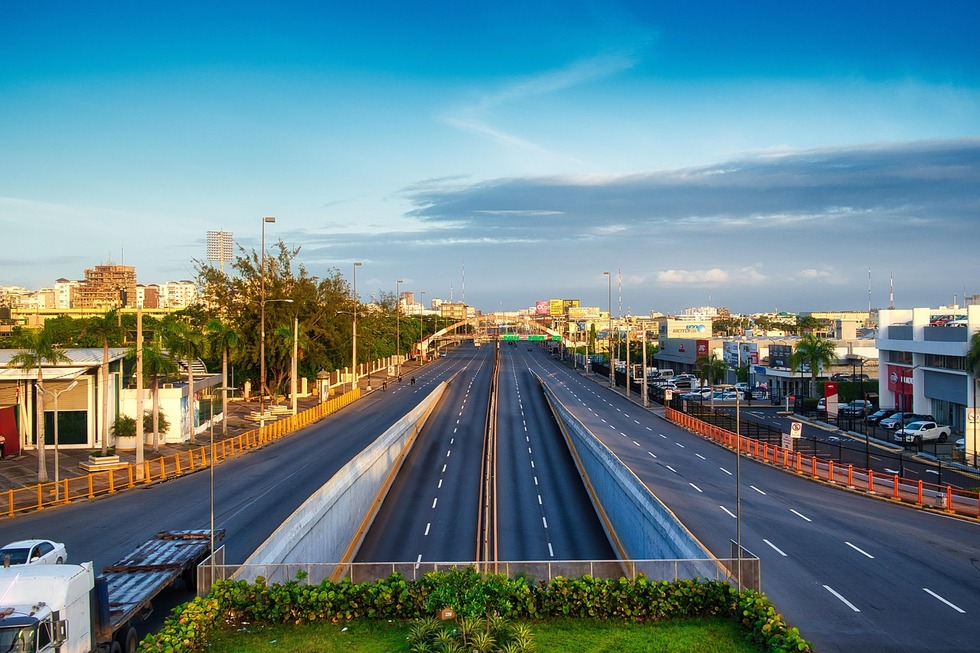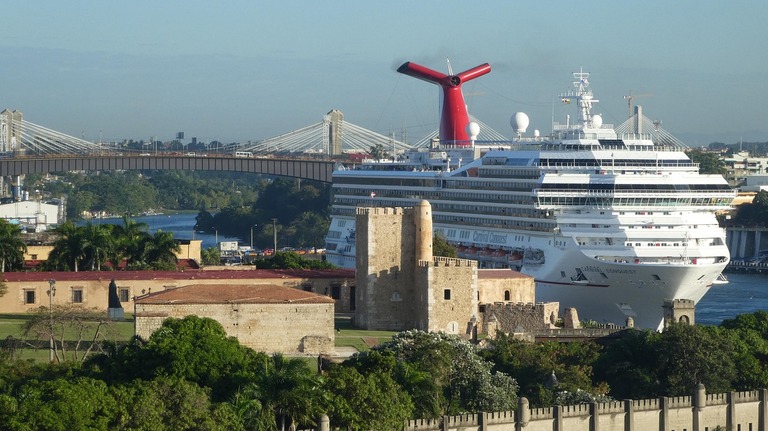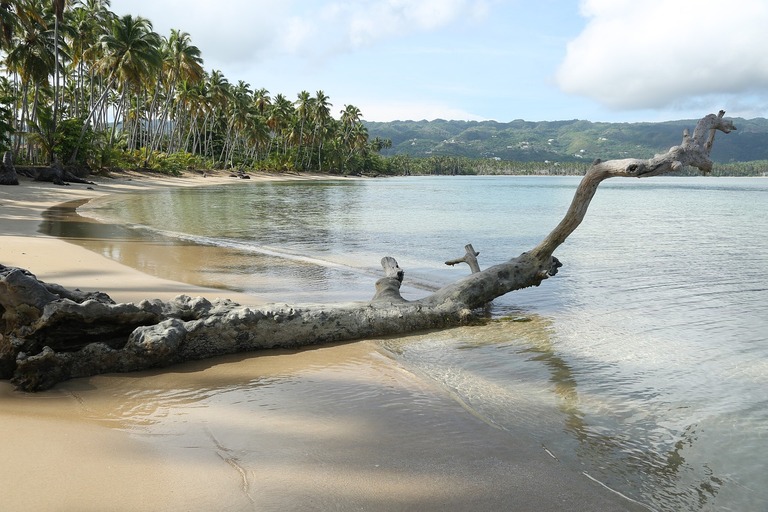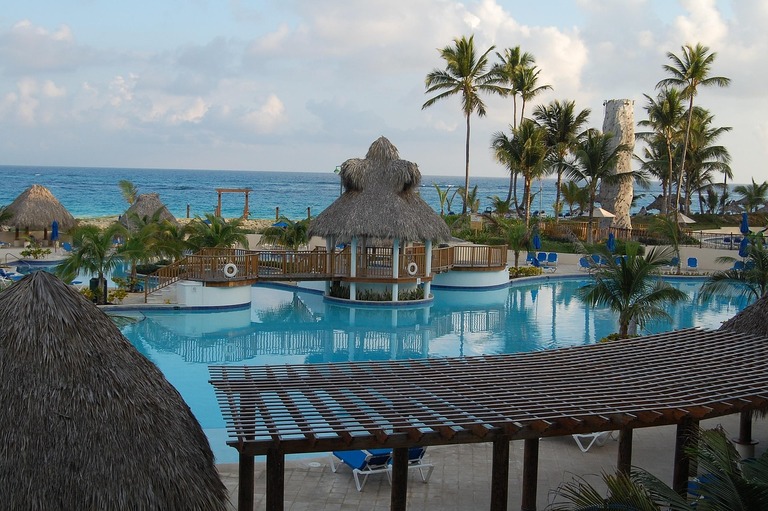Moving to the Dominican Republic: Complete guide to living, working, and retiring for expats

As of 2025, about 14,600 Americans and Canadians have chosen the Dominican Republic as their new home, making it one of the Caribbean’s most vibrant expat destinations. Moving to the Dominican Republic has become appealing for retirees looking for sunshine year-round, remote workers drawn by a lower cost of living, and entrepreneurs eager to tap into a growing economy and strong expat networks.
This guide will walk you through visas, residency, taxes, healthcare, banking, property, and what to expect as you settle into daily life abroad.
This article is brought to you by Taxes for Expats – a top-rated team helping US expats meet filing requirements. Understanding residency rules and tax thresholds in the Dominican Republic helps expats plan the income that may be reported to the IRS. If you are unsure, our team will guide you every step of the way.
Why the Dominican Republic is a leading pick
For an American planning a lifestyle change, this slice of paradise offers nature, community, and value in a single package. Before diving into visas and rigorous paperwork, let’s look at the reasons why so many expats choose the Dominican Republic in the first place – and what kind of life you can expect once you arrive.
- Tropical warmth with an annual mean near 25.5°C along the coasts contrasts with alpine trails on Pico Duarte at about 3,101 m. The country lists 26 Blue Flag beaches, and Samaná Bay hosts humpback whales from January to March.
- Merengue and bachata are recognized by UNESCO as elements of Intangible Cultural Heritage, and festivals anchor social life in major cities. Canadian snowbirds and wider expat networks cluster in hubs such as Cabarete, Sosúa, Las Terrenas, Punta Cana, and Santo Domingo.
- Living costs vs the US and Europe: Overall costs, including rent in Santo Domingo, are roughly 71 percent lower than in New York City. If you plan to move to Dominican Republic, you would need about €2,815 in Santo Domingo to match a €4,800 lifestyle in Madrid.
Visas and residency paths for expat life
Now that you have fallen in love with the lifestyle and climate, the next step is making your stay official – by choosing the right visa or residency route, so start by setting your foundation clearly with the right category, then move forward step by step.
Residence visa RS
Issued for 60 days, single entry, then you report to the General Directorate of Migration within 30 days to complete residency steps. Typical documents include a valid passport, police record with apostille, civil certificates, and translations where required. A US citizen commonly begins with an RS at a Dominican consulate, then finalizes status at DGM.
Work visa NM1
Multiple entries for one year tied to a Dominican employer, with a job offer and Ministry of Labor certification that the company is in SIRLA. You must appear at DGM within 30 days in the country to formalize a temporary status. Keep your work contract and company guarantee ready.
Pensionado under Law 171-07
Qualify with a minimum pension of US$1,500 per month and add US$250 per dependent. Benefits include transfer tax relief on your first property and 50 percent IPI and mortgage tax reductions. Prepare official pension letters and apostilles.
Rentista under Law 171-07
Show at least US$2,000 per month in stable foreign-source passive income, generally for a period of five years. You receive the same incentive package as pensionados once approved. Provide supporting bank or investment evidence with proper legalization.
Family reunification
Spouses and dependent children of Dominican citizens or legal residents apply at a consulate, then finalize at DGM within 30 days of arrival. Core documents include marriage or birth certificates, a passport, and background checks with an apostille.
Student visa E
Granted for studies with renewal each year; you must present an acceptance letter and maintain status with timely extensions. Passport validity and standard supporting records apply.
Dependent visa DPM
For dependents of principal visa holders, with marriage or birth certificates and financial support evidence. Beneficiaries must also present to DGM within 30 days after entry.
NOTE! Always confirm current visa requirements on the MIREX portal before you file.
Work permits and business growth paths
If your initial plan was to move to the Dominican Republic for work purposes, then after sorting out your residency status, you can use the practical route, which we outlined as a guide to work towards the permits you’ll require for local employment, remote work, or your own business.
- Secure the right work basis – Apply for NM1 when hired by a Dominican entity, using the employer's job offer and Ministry of Labor SIRLA certification; the visa is multiple-entry for one year. Present to DGM within 30 days of arrival to formalize your in-country status.
- Convert to local status at DGM – Enter with RS or NM1, then complete your temporary card and renewals toward permanent residence. Bring apostilled police records, civil certificates, and consular-issued documents.
- Leverage the investment channel – Residency by investment runs through the Ventanilla Única de Inversión, with a legal framework that targets definitive residency in up to 45 business days once approved. Use ProDominicana’s VUI guidance to track submissions.
- Free zone hiring option – NM1 has a free-zone track for companies operating under that regime; requirements mirror NM1 but cite the employer’s category. Keep corporate guarantees and registration evidence ready.
- Document discipline for smooth onboarding – Verify visa requirements on the MIREX services portal and avoid buying nonrefundable tickets before visa issuance. Keep originals plus certified translations for every filing.
Housing and real estate in the Dominican market
Once you’re ready to settle in for the long term, finding the right home is the next big decision you’ll have to make, whether to rent, buy, or invest in property.
Now, renting is the most flexible for a US expat getting settled, but landlords commonly ask one month up front plus a security deposit of two to five months, so initial cash needs can be heavy. Buying, on the other hand, brings predictable closing costs, led by a 3 percent real estate transfer tax payable within six months, plus typical legal and registration fees of around 1 to 2 percent.
Before you finally decide to rent or buy, you might want to take a look at popular & expat-friendly cities, so you will know exactly where to move to.
Santo Domingo
The Distrito Nacional counts 1,029,110 residents, while Greater Santo Domingo totals about 3.8 million. Its Zona Colonial is a UNESCO World Heritage site, which anchors a lively cultural core. International schooling includes the Carol Morgan School, accredited in the American system.
Santo Domingo, Dominican Republic. PHOTO CREDIT: PIXABAY
The capital is practical for full-time living with the widest range of hospitals, offices, and rentals.
Las Terrenas
Las Terrenas has 25,696 residents and a compact town center on the Samaná Peninsula. A strong French and Italian presence shapes cafe culture, bakeries, and bilingual services.
Las Terrenas, Dominican Republic. PHOTO CREDIT: PIXABAY
- Known for beachfront condos, small villas, and low-rise communities.
- Welcoming international mix that suits couples and families seeking walkable living.
- Good choice for remote workers who want beach access and community amenities.
Punta Cana
Verón Punta Cana municipal district records 138,919 residents as of the 2022 census. PUJ handled 10,105,713 passengers in 2024, which keeps short-term and seasonal rentals abundant. Residential choices include Puntacana Village and the luxury enclave of Cap Cana with managed amenities. Tourism scale and services make it one of the easiest places for newcomers to integrate.
Punta Cana, Dominican Republic. PHOTO CREDIT: PIXABAY
Now that you have decided where to live, use the pointers below to keep costs and paperwork under control:
- Check IPI exposure early, with the 2025 exemption at RD$10,190,833 and a 1 percent rate on the excess, payable in two installments.
- Budget for the 3 percent transfer tax and pay within six months to avoid surcharges.
- Hire an independent real estate attorney for due diligence and title work, and plan around 1 to 1.5 percent for legal fees.
Cost of living insights you can rely on
With housing costs in mind, it helps to see how daily expenses compare to what you’re used to in the US. Using Numbeo’s country comparison data, we analyzed a crisp snapshot for quick budgeting, which frames the cost of living for a US expat planning their next steps in the Dominican Republic.
| Variation | United States (USD) | Dominican Republic (RD$) |
|---|---|---|
| Housing | 1BR city center 1,730.79 | 1BR city center 28,687.25 |
| Utilities and internet | Utilities 210.13; Internet 72.14 | Utilities 4,183.40; Internet 2,286.07 |
| Food and dining | Meal inexpensive 20.00 | Meal inexpensive 450.00 |
| Transportation and healthcare | Monthly pass 65.00; Health Care Index 67.5 | Monthly pass 1,913.04; Health Care Index 58.4 |
Overall, the United States is the most expensive across these lines, and the Dominican Republic is the most affordable in this cut. Use this snapshot to anchor planning for how to move to the Dominican Republic from the US.

Healthcare coverage & quality
Budgeting also includes health coverage – an important topic for anyone planning to live abroad. Foreigners in the Dominican Republic can choose between public and private healthcare – after learning how each system works in detail.
The public system is overseen by SISALRIL through the Seguro Familiar de Salud, while private ARS insurers offer broader plans and supplemental benefits. A US expat with payroll employment is typically enrolled in the contributory regime, and independent movers often choose private ARS plans or SeNaSa Larimar, which is available to Dominicans and foreigners seeking an independent policy. Typical baseline benefits cover a hospital room at 100 percent up to RD$1,725 per day, with 90 percent above that band, inpatient medicines at 85 percent, surgery at 90 percent, and ambulatory drug coverage raised to RD$12,000 per year.
In the capital, CEDIMAT operates a 180-bed cardiovascular center measuring 322,917 square feet within the Plaza de la Salud campus alongside Hospital General de la Plaza de la Salud. In key hubs, Hospiten Bávaro and IMG Hospital in Punta Cana provide 24-hour emergency services, and IMG notes acceptance of more than 50 international insurers and ACHC accreditation. These systems and facilities give people moving to the Dominican Republic a clear path from primary care to tertiary specialties, with bilingual services where needed.
Employment and business in the Dominican
For expats moving to the Dominican Republic in 2025, once you’ve planned your healthcare insurance, work permits, and your daily cost of living, it’s time to look at the work landscape – here’s what to know about jobs and business setup.
- Labor outlook: Open unemployment stood at 5.0 percent in Q2 2025, according to the Central Bank. Export free zones support 198,552 direct jobs, with about 36,000 in call centers and BPO alongside tobacco, apparel, and medical devices.
- Launching a company: Reserve a trade name with ONAPI, secure your Registro Mercantil at the chamber, then request your RNC tax ID via DGII online, which lists a typical response of 6–7 business days. Register as an employer with the Tesorería de la Seguridad Social and use Formalízate and the Ventanilla Única de Inversión for smoother processing, a sequence that helps American expats open accounts and hire staff.
- Remote work and connectivity: Regulator Indotel raised the minimum fixed broadband standard to 30 Mbps down and 10 Mbps up in 2025, while internet use reached about 88.6 percent of the population at the start of the year. Average fixed speeds hovered near 45.79 Mbps in early 2025, and 5G service is live in major cities through Claro and Altice, which supports stable remote operations.
Also read. Digital nomad taxes – guide 2025
Tax facts for expats in Dominican Republic
Understanding how taxes work – both in the Dominican Republic and with the IRS – is essential, as it ties everything we have been discussing so far, which is why we highlighted a few facts covering the rates, thresholds, filing dates, and cross-border rules you need to know.
| Topic | Key facts 2025 |
|---|---|
| Personal income tax | Exempt up to RD$416,220. Then 15% on income up to RD$624,329, 20% up to RD$867,123, and 25% above that. Annual filing due March 31. |
| VAT ITBIS | 18% standard rate on goods and services; monthly filing applies. |
| Property tax IPI | 1% on value above RD$10,190,833; due March 11 and September 11. |
| Withholding at source | Dividends 10%; interest 10% to nonresidents; 27% on some cross-border services. |
| Social security contributions | Employees 5.91%, employers around 15.39% plus risk coverage. |
| Corporate and asset taxes | Corporate rate 27%; asset tax 1% of taxable assets. |
| Key annual dates | IR-1 due March 31; IR-2 due 120 days after the fiscal year; IPI split into two installments. |
| US coordination points | FEIE exclusion up to $130,000 in 2025; FATCA IGA means banks report US taxpayers. |

Dominican Republic schooling system for expats
Once the financial and legal setup is clear, individuals moving long-term often turn to the next priority – finding the right school either for themselves or their wards by weighing public options, private academies, and international campuses alongside universities. When you are moving to the Dominican Republic, it is crucial to decide early how language, accreditation, and educational costs align with your goals.
State and independent schooling
Public education is free at the initial, primary, and secondary levels, and the extended school day now operates as a single eight-hour schedule with school meals, reaching about 1.335 million learners or 72 percent of enrollment prior to 2020. Private and bilingual campuses set their own fees and timetables, while public schools follow the national calendar approved each year.
Global schools and higher education
Leading international campuses include Carol Morgan School in Santo Domingo and Santiago Christian School in Santiago, with SCS publishing tuition of 6,965 $ for grades 9 to 12. For university study, the public Universidad Autónoma de Santo Domingo traces its origin to 1538, while private options include INTEC and PUCMM, which require B2 Spanish and post updated per credit fees. Many institutions follow American curricula or hold US accreditation, easing transfers for relocating families.
Spanish study options and apps
Structured courses are widely available, from the Instituto Cultural Dominico Americano with five levels of three-month modules to IIC programs that include DELE preparation and immersion. For self-paced learning, Duolingo offers a free Spanish course and notes that its largest courses are designed to reach roughly B2 on the CEFR scale. Families often blend an app with in-person classes for faster progress.
Local Dominican lifestyle tips for American expats
Beyond schooling, job opportunities, or even taxes, it’s everyday life that really shapes your experience abroad. From safety tips to recreation and money habits, here’s how Americans can settle smoothly into Dominican life.
-
Street smarts and personal security
Use registered taxis or trusted ride apps at night and stay in well-lit, busy areas in Santo Domingo and Santiago. Save embassy contacts and use tourist police channels in resort zones if you need help. -
Free time, sports, and local fun
Catch a baseball game when the season is on or join a kitesurfing lesson on the north coast for quick community ties. Parks and waterfront malecons are lively in the evenings and make easy, low-cost routines. -
Money and payments
Carry a backup card and small cash for markets and tips. Use ATMs located inside banks and enable transaction alerts with your US bank.
Get expert tax help for your move to Dominican Republic
Handling your Dominican Republic tax obligations is just one step in settling abroad – keeping up with IRS rules at the same time is equally essential. From reporting Dominican income correctly to making the most of the Foreign Earned Income Exclusion, the details can impact your bottom line.
Our team simplifies every filing, from DGII returns to US tax compliance, so you can avoid penalties and focus on enjoying your new lifestyle. At Taxes for Expats, we guide Americans through both systems with confidence and clarity.

FAQ
Plan on roughly $1,500 to $2,500 per month for a comfortable lifestyle in major hubs, with coastal resort areas often costing more, plus one-time setup expenses.
Communities of Americans are common in Santo Domingo, Santiago, Punta Cana, Las Terrenas, Sosua, and Cabarete, offering choices from urban living to beach towns.
Typical challenges include bureaucratic processes, occasional power outages, uneven road safety, and reliance on private healthcare or strong insurance.
Short stays are straightforward with eTicket entry, while long-term relocation hinges on securing the correct visa or residency and organizing tax and document compliance.






